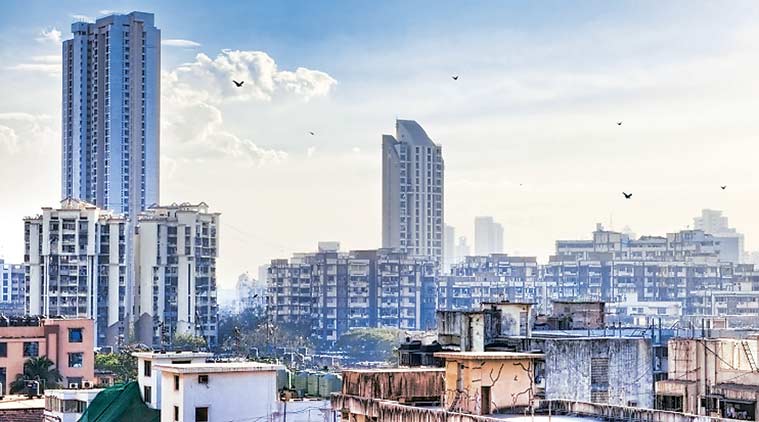Stay updated with the latest - Click here to follow us on Instagram
New policy to lend ‘iconic’ status to Mumbai’s highrises
Architectural features will be now allowed on highrise terraces and rooftops to enhance aesthetic value
Mumbai’s skyline is set to be redefined. The Mumbai Municipal Corporation has approved a new policy to improve the aesthetic value of its iconic tall buildings. Civic Commissioner Ajoy Mehta Monday sanctioned guidelines permitting aesthetic designing and elevational treatment of highrise terraces and rooftops.
Developers and architects of high-end residential and commercial buildings will now be able to design elevational features, including signature crowns, domes, pergolas, cornices, and chajjas to improve the overall character and look of their buildings. “Mumbai needs to enhance the iconic value and character for its highrises,” said Mehta.
Senior officials told The Indian Express that leading architects and developers had approached the Brihanmumbai Municipal Corporation (BMC) with this request. The guidelines were issued since Mumbai’s development control regulations did not specify provisions for elevational treatments at the terrace level, senior officials clarified.
In 2012, the BMC had clamped down on elevational features such as lily ponds, niche, Venetian blinds, and parking decks, at the floor level after complaints of rampant misuse of these spaces, which were permitted free of FSI.
Mehta said the major difference between then and now was that the elevational features being permitted this time were for areas that were not naturally habitable and hence were unlikely to be abused. He said safeguards had also been built in the guidelines to check misuse. “We will enforce these safeguards stringently,” he said.
The new guidelines permit construction of parapet wall of greater height on both sides of the common terraces. “This can be of any shape and profile,” the circular states. Mehta said a condition that 60 per cent of the surface area of the parapet wall should be provided with voids and openings, had been imposed to check misuse.
These guidelines, however, do not give developers a carte blanche. For now, the elevational features will only be permitted for buildings at prominent city locations where the road width is at least 40 feet wide. The civic body has also disallowed construction of parapet wall and architectural features for private pocket terraces, intermediate terraces, slopping terraces, refuge floors, or parking floors.
Similarly, dome-like structures of any shape will now be permitted above non-habitable areas such as water tanks, lift machine rooms, staircase rooms. The civic body has also decided to allow peripheral fins to ‘camouflage’ stack parking at the podium level.








